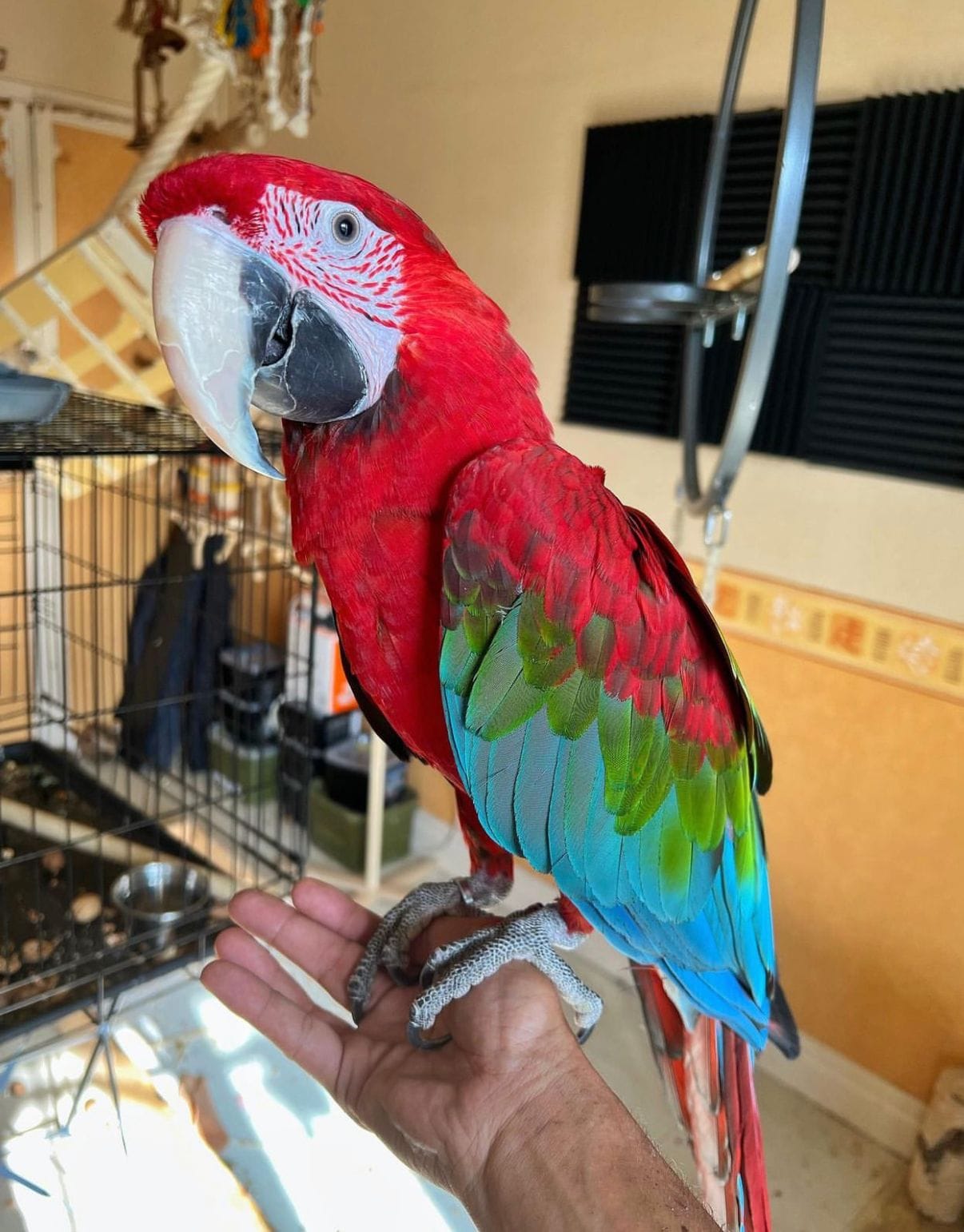10 Quick Tips On Melody Blue Spix Macaw
페이지 정보
작성자 Amber 댓글 0건 조회 4회 작성일 25-02-25 19:30본문
 Melody Blue Spix Macaw
Melody Blue Spix MacawAfter a long period filled with speculation and worry Brazilians and German conservationists were able to successfully reintroduce a couple of couples back to their natural habitat. Their story is inspiring but also rife with jealousy and backbiting.
 The first hurdle was obtaining enough birds to participate in the exchange. The macaws were monogamous, therefore it was important to match pairs well.
The first hurdle was obtaining enough birds to participate in the exchange. The macaws were monogamous, therefore it was important to match pairs well.Range
A South African couple has taken on the task of saving the critically endangered Spix's macaw. The bird was declared extinct by the United Nations in 2000 owing to decades of habitat destruction and poaching. They have a small number of the birds that are in captivity and hope to release them near Curaca. They refer to them as their blue-eyed friends and compare their experience with the journey of Presley, the only known Spix's Macaw found in the wild. They describe him a true survivor, who lost his family but kept his faith in the region. They feel a strong bond to him and see their lives as being identical to his.
The discovery of the last Spix's macaw offered an excellent opportunity for researchers to examine its behavior in the wild and gain a deeper understanding of how the species survived such a long time. This allowed researchers to estimate the population of this unique bird with greater accuracy. Researchers were able to gather important information about the bird's daily movements, seasonal adjustment to drought and its food habits. Researchers even monitored attempts to reproduce using an Illiger's and a Spix's hybrid macaw couple, which was a crucial step towards the recovery of this species.
It was an amazing feat that this bird was able to endure and thrive in the wild with such the smallest gene pool and has helped researchers understand how these birds could be reintroduced back to the wild. The survival of the last bird inspired people to take action in order to save other parrots as well as endangered species. This has also encouraged zoos to create their own captive breeding program for these exotic bird species.
This working group is an illustration of how conservation groups as well as other organizations and individuals can collaborate to protect endangered species of wildlife and animals. This group consists of Brazilian government officials, zoo reps international holders of the Spix’s macaw, and ornithologists to achieve a common goal: the recovery of this endangered bird.
The group has already achieved a lot of work. This includes preparing a plan to reintroduce the bird in the wild. The group has also been working to raise funds to support field research as well as community outreach and captive-breeding birds to support the reintroduction program. They have also formed an ongoing committee to help recover the bird.
Habitat
Threatened by poaching and habitat destruction The Spix's Macaw (Cyanopsitta spixii) was thought to be extinct in the wild 10 years ago. Aviculturists and ornithologists as well as other experts continue to fight to save this iconic bird from the brink extinction.
The Spix's Macaw pet shop is well-known to millions around the world due to a popular animated film and two sequels. However, this is only the beginning on the long road of bringing these birds back. A multi-national team has been working for decades to breed and reintroduce Spix's Macaws raised in captivity into the wild.
The Spix's Macaw is an indigenous species that is found in a small area of northeast Brazil known as the Caatinga. This arid region is characterized by flat savannah scrubland, which is surrounded by galleries and seasonal streams. The first time it was described was in 1819 and is among of the least-known Neotropical parrots to buy, despite only few glimpses of the wild, a few captive birds and some museum specimens.
To save the declining population In order to save the declining population, an international group was formed. It brought together experts in aviculture who had the last remaining bird as well as government officials. This group formed a collaboration with the world-renowned non-profit organization Al Wabra Wildlife Preservation of Qatar to establish an initiative to restore the population of Spix's Macaws in their native environment.
AWWP has acquired and is recovering 2,380 hectares of Caatinga near Curaca (Brazil) of prime habitat. AWWP also breeds and raises birds that will be released into the wild. This will give a genetically-pure source of animals for the future generations.
Spix's Macaws are typically found in trees and rarely seen on the ground. They build nests in hollows or holes and search for fruits, seeds, nuts, and other plants. They can spend up to a third of the day in the nest.
To aid in tracking the Spix's macaws as well as their movements, a local community was invited to join the field team. The community was given watches that would turn on when a Spix's macaw price is detected. This allowed them to track the birds in the wild and their daily actions. This approach has been extremely successful.
Diet
The Spix's Macaw is the only species of the Genus Cyanopsitta. It was listed as extinct in the wild in the year 2019 by the International Union for the Conservation of Nature following the disappearance of the last wild parrot disappeared in 2000, and subsequent surveys failed to locate any additional birds. However, a reintroduction plan currently underway is trying to bring back this critically endangered bird back to its natural habitat in Caatinga.
The northeast region of Brazil is home to about 10% of the entire country. Spix's Macaws were a nesting species in the hollows of old caraibeiras, and they were also known to feed on nuts and seeds.
A reintroduction plan is currently underway to re-establish a wild population of the Spix's Macaw. Eight birds raised in captivity were released into the wild in June and 12 more are scheduled to arrive in 2022. They will be joined by Blue-winged Macaws, which were reintroduced into the same area and will help to share information about food sources and nesting and roosting areas.
The reintroduction programme has already collected vital biological data about the behavior price of blue macaw this rare bird, macaw Pet Shop including details on daily movements patterns as well as seasonal adjustments to drought. It also has provided a glimpse into the evolution of the Spix's Macaws. This helps to understand the factors that led to their extinction.
Spix's Macaws consume the seeds, nuts, and fruits of a myriad of plants native to the Caatinga Biome. Pinhao-bravo, linhas Brasil and facheiro (Pilosocereus Pachycladus) are all part of this diet. They may also consume the fruit of acai palms (Acaia oliva) or mofumbo (Combretum leprosum).
Like all parrots Like all parrots, Spix's Macaws are social birds that bond closely with their parents. They are very vocal and often imitate human speech and other sounds. They have a mating call called "whichaka," described as an incredibly short and repetitive noise similar to an acoustic note. They are known to fly high and fast when they are in an ecstatic mood.
Breeding
Spix's Macaws are extremely intelligent and social birds. They communicate by screeching, squawking and other sounds. Like many parrots, they are able to mimic human speech. They have owning a macaw strict routine, which includes flight patterns and bathing habits. They also can recognize other members of their flock. They are adored as pets and are frequently targeted by illegal trade in birds due to this.
By the early 1980s, only three Spix's macaws remained in the wild, and all of them being poached. In 1995, poachers killed both male and female birds in the hope of pairing them. Since since then, all Spix's Macaws known have been captive-bred – mostly in Brazil.
The handful of Spix's macaws that are in captivity are a mix of individuals who are the descendants of just two individuals, making them at risk of disease and other environmental threats. The majority of the birds that are in captivity are in the breeding center in Germany, but this year an agreement between the German conservation center and the Brazilian government was not renewed and causing doubt about future plans to repatriate the birds and reintroduce them into the wild.
Despite their low numbers of captive-bred Spix's macaws, captive-bred species show some signs of improvement. This was evident when a Swiss breeder was able to beat a sheikh from Qatar to purchase from a collector three Spix's Macaws that were not part of the breeding program.
In part due to this and other efforts, the captive-bred bird population is beginning to grow, but not at a speedy pace. Reintroducing the birds to the wild will require them to remain healthy and produce. It is essential to choose the right birds prior to releasing them. The macaws need to be at a reproductive age and be joined by a sibling or a close relatives.
The return of the Spix's Macaw to the wild may prove difficult, but it is important to try. ABC and its partners have developed reserves to safeguard the last remaining habitats of this species. The eight Spix's Macaws that were recently released will be joined by the blue-winged Macaws. These macaws are more common in Caatinga and are found in areas where to buy macaw the Spix's macaws also live. These smart birds will help the macaws become more accustomed to the region, and they will provide security in large numbers.
- 이전글비아그라 구하는 방법 비아그라 구합니다 25.02.25
- 다음글11 Ways To Totally Block Your Retro Fridge Freezer White 25.02.25
댓글목록
등록된 댓글이 없습니다.